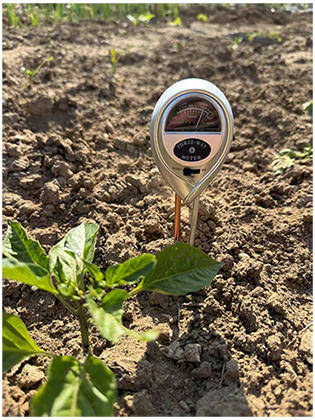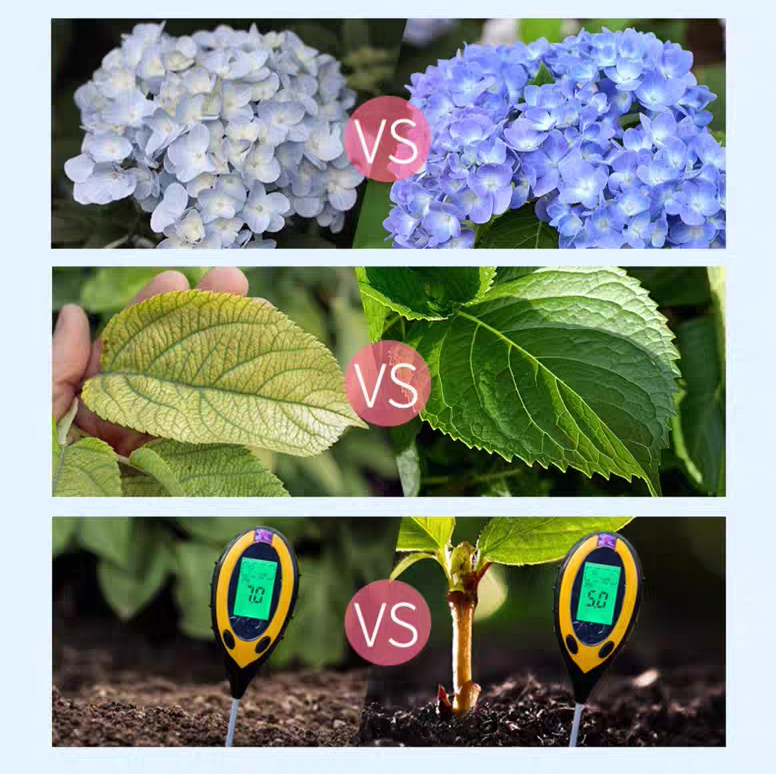Blog - Aure Chemical
How to Lower Soil pH Using Aluminum Sulfate in Agriculture
Solid aluminum sulfate (alum, Al₂(SO₄)₃·xH₂O) is a common soil amendment used in agriculture to lower pH levels, particularly for acid-loving plants like blueberries, azaleas, rhododendrons, and hydrangeas. By acidifying the soil (typically targeting pH 4.5–5.5), it enhances nutrient absorption, making micronutrients such as iron (Fe), manganese (Mn), zinc (Zn), and copper (Cu) more bioavailable. This prevents deficiencies like iron chlorosis (yellowing leaves) and improves overall plant health, growth, and yield. However, overuse can harm plants or contaminate groundwater, so precise application is crucial. Below are the step-by-step instructions based on horticultural guidelines from extension services. Always wear PPE (gloves, goggles, mask) as aluminum sulfate can irritate skin and eyes, and conduct a soil test first.
Step 1: Test Your Soil pH and Nutrient Levels
Why? Establish a baseline to avoid over-acidification, which could lock out other nutrients like calcium or magnesium.
How to Do It:
Collect soil samples from 6–8 inches deep across multiple spots in your field or garden bed (avoid areas near roots or fertilizers).
Use a home soil pH testing kit, digital meter, or send samples to a lab (e.g., university extension service) for comprehensive analysis, including pH, nutrient levels, and soil type (sandy, loamy, clay).
Ideal starting point: If current pH is above 6.0–7.0, proceed; below 4.5, do not apply as it may become too acidic.
Timeline: Test in fall or early spring for best results.
Step 2: Calculate the Required Dosage
Why? Dosage varies by soil type, current pH, target pH, and area. Sandy soils require less (quicker reaction), while clay needs more.
How to Calculate:
Sandy soil: 0.5–1 lb (reduce by 1/3 from standard).
Loamy soil: 1–1.5 lbs.
Clay soil: 1.5–2 lbs (increase by 1/2).
General guideline: To lower pH by 1 unit per 100 sq ft:
Example: For a 1,000 sq ft blueberry patch at pH 6.5 (target 5.0), use ~10–20 lbs total, split into applications.
Use online calculators (e.g., from Purdue or Wisconsin Extension) or lab recommendations. Factor in buffer capacity from soil test.
Caution: Apply in increments over months to avoid shocking plants; maximum one application per season.
Step 3: Prepare the Aluminum Sulfate Solution
Why? Solid form can clump; dissolving ensures even distribution and faster soil penetration.
How to Prepare:
Weigh the calculated amount of solid aluminum sulfate.
Fill a non-metal bucket (plastic) with warm water (1 gallon per 1–2 lbs of aluminum sulfate).
Slowly add the solid to the water (not vice versa) while stirring to dissolve fully (5–10 minutes). It forms an acidic solution—handle carefully.
For dry application (less common): Spread granules directly, but this is slower and riskier for uneven pH drops.
Step 4: Apply the Aluminum Sulfate to the Soil
Why? Direct application targets the root zone, where pH adjustment enhances nutrient uptake (e.g., acidic soil solubilizes Fe for chlorophyll production).
How to Apply:
Choose a dry, calm day in early spring or fall (avoid summer heat or rainy periods to prevent runoff).
For solution: Evenly broadcast or spray over the soil surface using a garden sprayer. Focus on the drip line of plants.
For dry: Spread granules uniformly with a broadcast spreader.
Lightly incorporate into the top 2–6 inches of soil using a rake or tiller (avoid deep tilling to prevent root damage).
Water thoroughly (1–2 inches) immediately after to activate and drive it into the soil. Aluminum sulfate reacts quickly (days to weeks), unlike sulfur (months).

Step 5: Monitor and Retest Soil pH
Why? Confirm the pH change and nutrient improvements; over-acidification can cause aluminum toxicity or nutrient lockout.
How to Monitor:
Wait 2–4 weeks for full reaction, then retest pH and nutrients.
Observe plants: Look for greener leaves (improved Fe absorption) and better growth. If deficiencies persist, reapply sparingly.
Retest every 3–6 months; soil pH can revert over time due to natural buffering.
Enhancing Nutrient Absorption: At lower pH (4.5–6.0), micronutrients become more soluble, boosting uptake. Combine with organic matter (e.g., compost) for sustained benefits.
Additional Tips and Precautions
Safety: Aluminum sulfate is acidic—avoid contact with skin/eyes; rinse immediately if exposed. Not for edible crops near harvest.
Environmental Impact: Prevent runoff into waterways to avoid eutrophication. Use only where needed; alternatives like elemental sulfur are slower but organic-friendly.
Limitations: Ineffective in highly buffered or calcareous soils; may require lime later if pH drops too low.
Cost and Sourcing: Typically $0.20–$0.50/lb; buy from agricultural suppliers.
Following these steps can effectively lower soil pH, enhancing nutrient absorption and plant health in agriculture.
Looking for a reliable bulk supplier of Aluminum Sulfate (10043-01-3)?
Aure Chemical provides Premium Aluminum Sulfate raw materials.
View our Aluminum Sulfate product page
